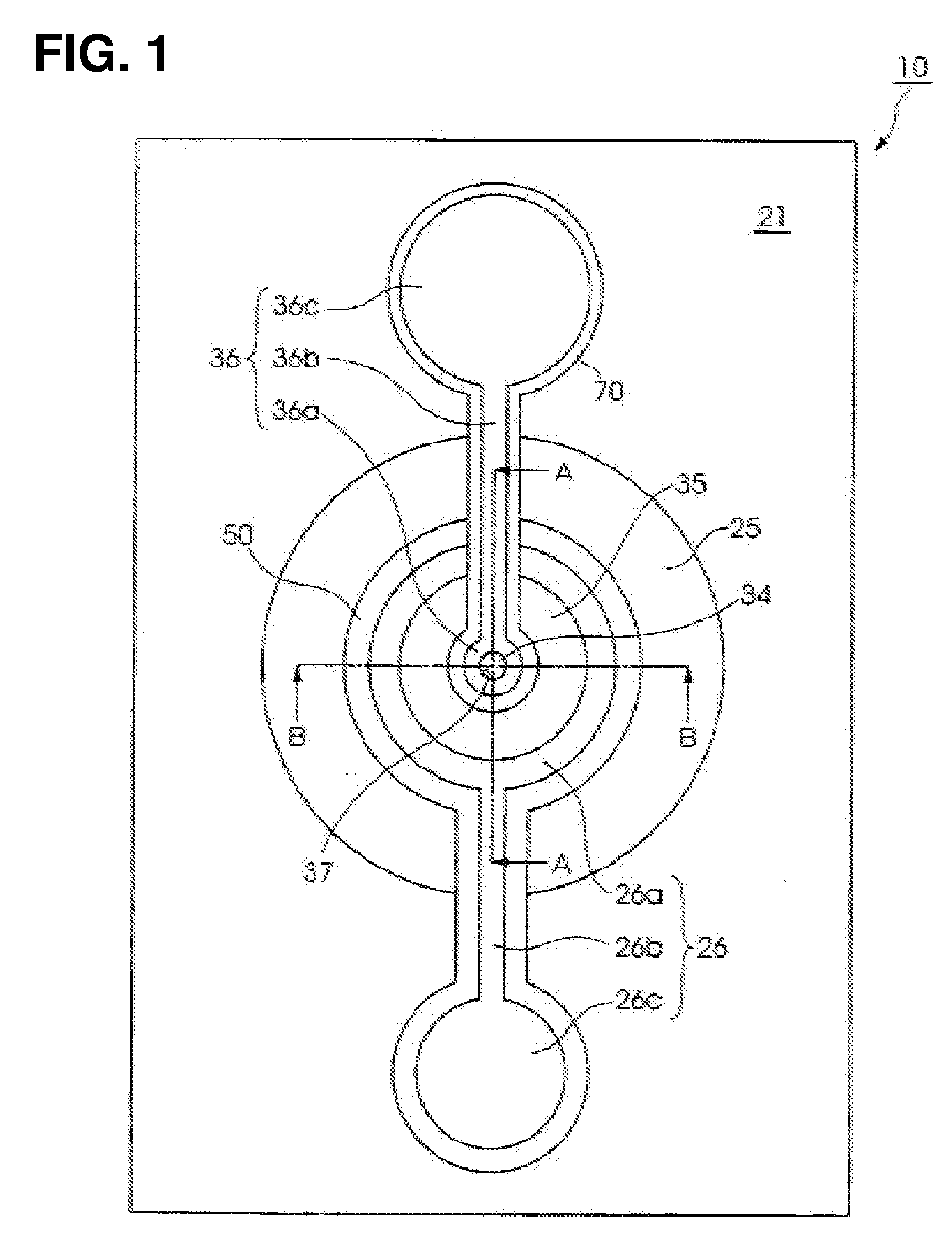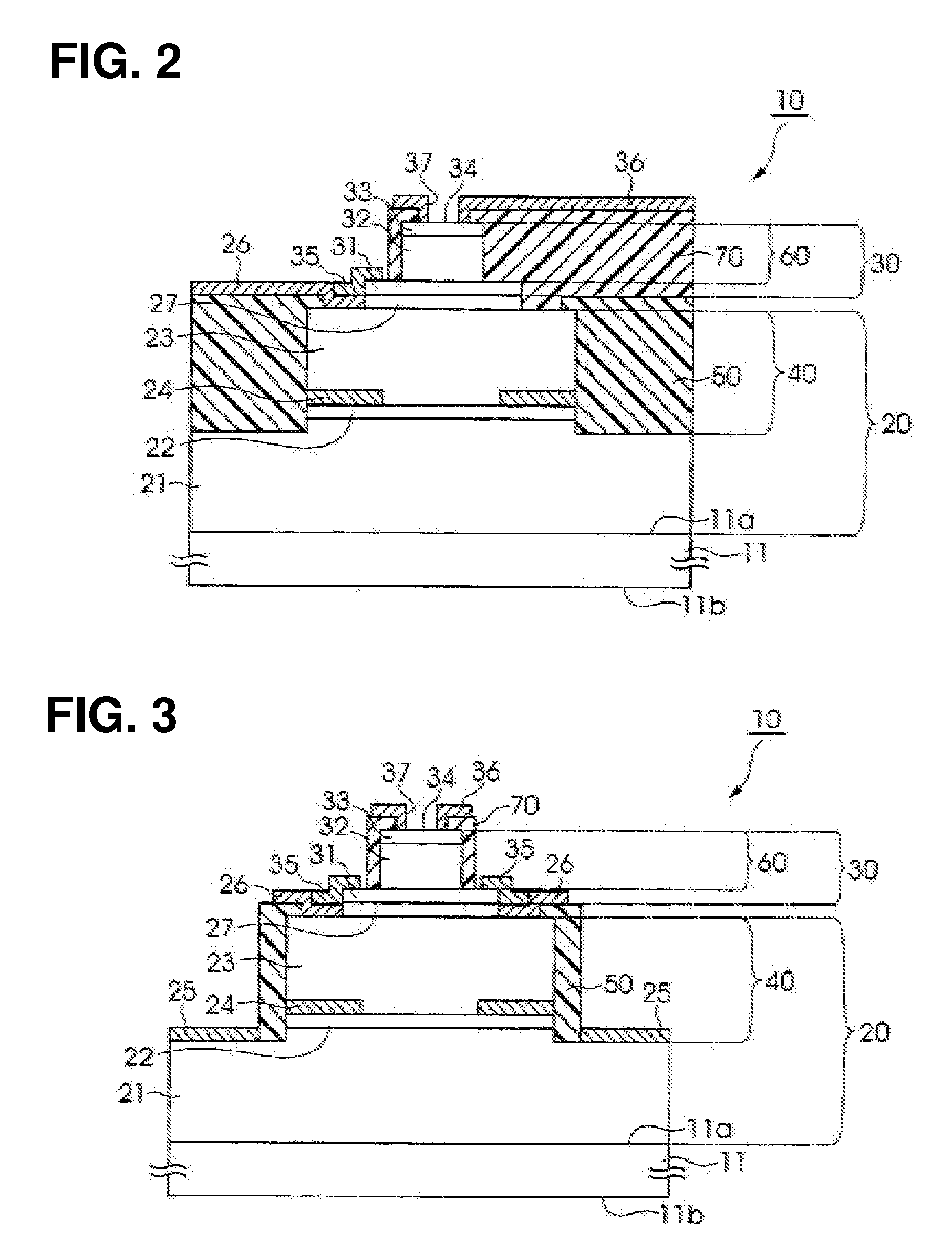Optical element and its manufacturing method
a manufacturing method and technology of optical elements, applied in the field of optical elements, can solve the problems of reducing the production yield, shrinking and peeling of the insulation material covering the side surfaces of the first and second columnar sections, and reducing the yield, so as to achieve high efficiency, reduce leakage current, and reduce yield
- Summary
- Abstract
- Description
- Claims
- Application Information
AI Technical Summary
Benefits of technology
Problems solved by technology
Method used
Image
Examples
Embodiment Construction
[0051] An optical element and its manufacturing method in accordance with an embodiment of the invention are described in detail with reference to the accompanying drawings. It is noted that the embodiment to be described below indicates a part of modes of the invention, does not limit the invention, and can be appropriately modified within the scope of the invention. Also, in the drawings referred to below for describing the invention, the scale may be changed for each of the layers and each of the members such that the layers and the members can have appropriate sizes that can be recognized on the drawings.
[0052] Structure of Optical Element
[0053] First, the structure of an optical element in accordance with an embodiment of the invention is described with reference to FIGS. 1 through 3. FIG. 1 schematically shows a plan view of the optical element in accordance with the embodiment of the invention, and FIG. 2 and FIG. 3 schematically show cross-sectional views of the optical el...
PUM
 Login to View More
Login to View More Abstract
Description
Claims
Application Information
 Login to View More
Login to View More - R&D
- Intellectual Property
- Life Sciences
- Materials
- Tech Scout
- Unparalleled Data Quality
- Higher Quality Content
- 60% Fewer Hallucinations
Browse by: Latest US Patents, China's latest patents, Technical Efficacy Thesaurus, Application Domain, Technology Topic, Popular Technical Reports.
© 2025 PatSnap. All rights reserved.Legal|Privacy policy|Modern Slavery Act Transparency Statement|Sitemap|About US| Contact US: help@patsnap.com



